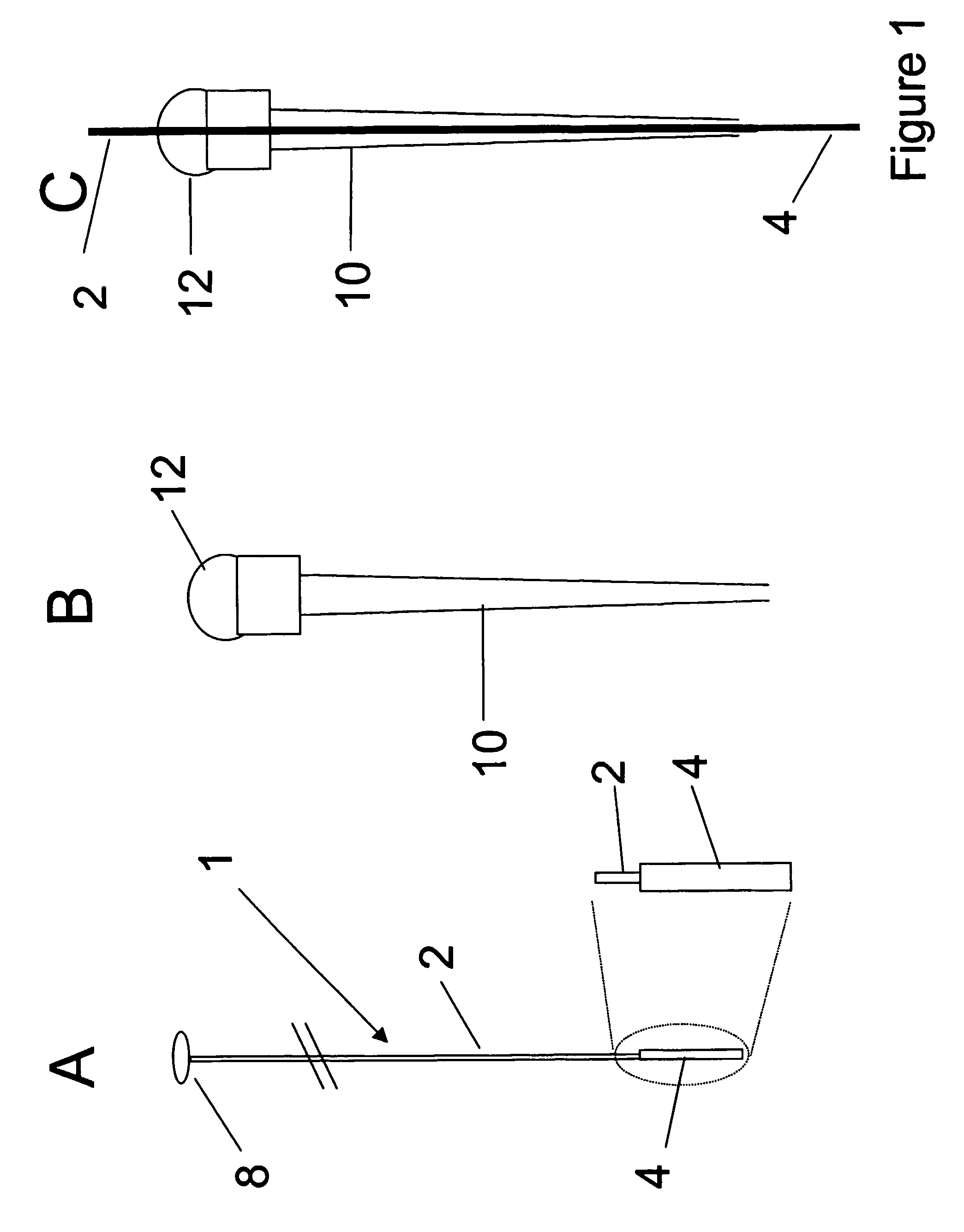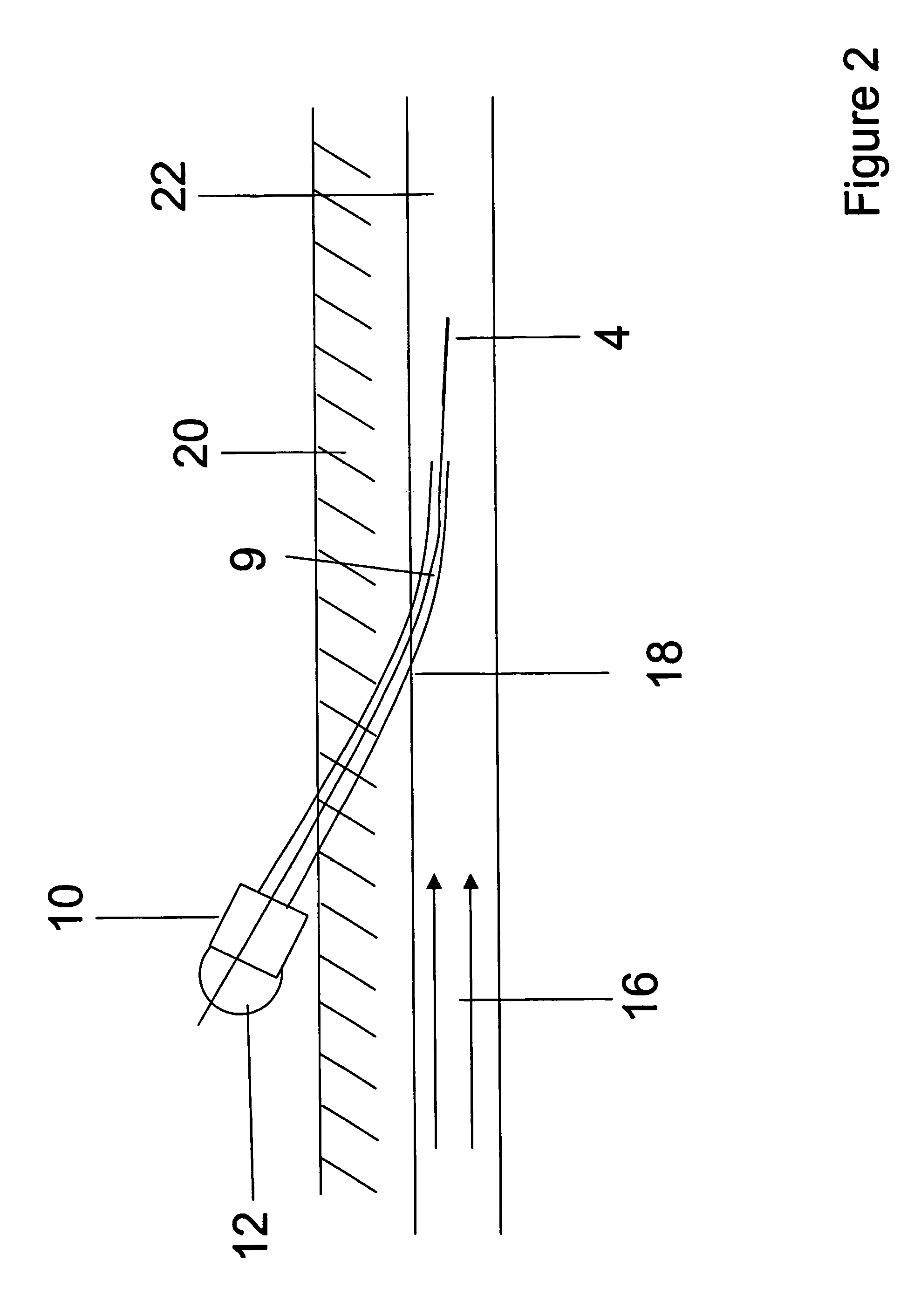Micro-devices and analytical procedures for investigation of biological systems
a biological system and micro-device technology, applied in the direction of slide valves, chemical vapor deposition coatings, packaged goods types, etc., can solve the problems of significant impact of sample preparation errors, disruption of the chemical balance of the chemical inside the animal, and time-consuming and labor-intensive problems
- Summary
- Abstract
- Description
- Claims
- Application Information
AI Technical Summary
Benefits of technology
Problems solved by technology
Method used
Image
Examples
example 1
Preparation of Polypyrrole Coating on Stainless Steel Wires and Use in a Biological System
[0148]Stainless steel wires (grade T-304V, 0.005″) were from Small Parts Inc. (Miami Lakes, Fla.). Lithium perchlorate (95%) and pyrrole (98%) were from Sigma / Aldrich (Mississauga, ON). Pyrrole was used as received for one month after opening, was stored refrigerated and the bottle was layered with nitrogen after each use. Polypyrrole (PPY) films were deposited onto the supporting electrode surface (stainless steel wire) by anodic oxidation of the pyrrole monomer in the presence of an aqueous electrolyte solution (counter ion). A potentiostat / galvanostat (Model 273, EG&G Princeton Applied Research) was used for the electrodeposition. The last 15 mm of the wires were coated potentiostatically at 0.8 V for 20 minutes. The placement of a silicon septum 15 mm from the end of the wire allowed for accurate control of coating length. The coating solution used was pyrrole (0.1M) and lithium perchlorate...
example 2
MALDI Analysis
[0159]In this Example, a medical aerosol compressor was used as the matrix sprayer, and 10 mg / mL matrix DHB solution was deposited into the nebulizer vial. After analyte extraction the fibre tip was placed 1.5 cm above the nebulizer vial, and by turning on the compressor very fine drops of the matrix DHB solution were formed and attached to the fibre tip. The 800 μm fibre was tested with the spray method for a 0.05 mg / mL TOAB sample solution. The times for matrix application were set at 45 seconds and 30 seconds, respectively, considering the lower analyte concentration. Two 3 minute air-dry times were applied before and after the spray of matrix.
[0160]FIG. 27 shows an IMS spectrum from this analysis. The limit of detection was found to be 0.02 mg / mL with S / N ˜2. This level is 10 times lower than the previous 0.2 mg / mL established by the 400 μm fibre using the pre-mixed method. The sensitivity has been increased dramatically. This great improvement was attributed to th...
example 3
On-Fiber and In-Needle Laboratory
[0162]In micromachined devices, controlling flow is not simple since it requires pumps or electroosmontic flow means. In addition it is quite difficult to mix analytes in the small channels. A more efficient approach is to do sample processing on the surface or in thin layers adjacent to the surface. The structures chosen in this Example are the outer surfaces of fibers. Alternatively, the inside surface of a tube fiber could be used. This Example makes use of a small fiber to demonstrate a convenient sampling method to collect analytes from small objects. In this work capillary electrophoresis with fluorescence detection has been used to facilitate detection of small amounts of analytes extracted by the fiber.
[0163]Chemicals and materials. 4-fluoro-7-nitro-2,1,3-benzoxadiazole (NBD-F) was purchased from Fluka (Sigma-Aldrich Canada Ltd., Oakville, Ontario). Brij 35® and all amino acids (glycine, L-phenylalanine, L-proline, L-glutamate and L-aspartate...
PUM
| Property | Measurement | Unit |
|---|---|---|
| thicknesses | aaaaa | aaaaa |
| time | aaaaa | aaaaa |
| diameter | aaaaa | aaaaa |
Abstract
Description
Claims
Application Information
 Login to View More
Login to View More - R&D
- Intellectual Property
- Life Sciences
- Materials
- Tech Scout
- Unparalleled Data Quality
- Higher Quality Content
- 60% Fewer Hallucinations
Browse by: Latest US Patents, China's latest patents, Technical Efficacy Thesaurus, Application Domain, Technology Topic, Popular Technical Reports.
© 2025 PatSnap. All rights reserved.Legal|Privacy policy|Modern Slavery Act Transparency Statement|Sitemap|About US| Contact US: help@patsnap.com



